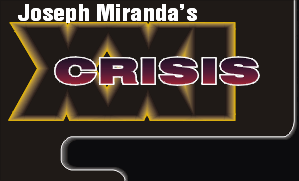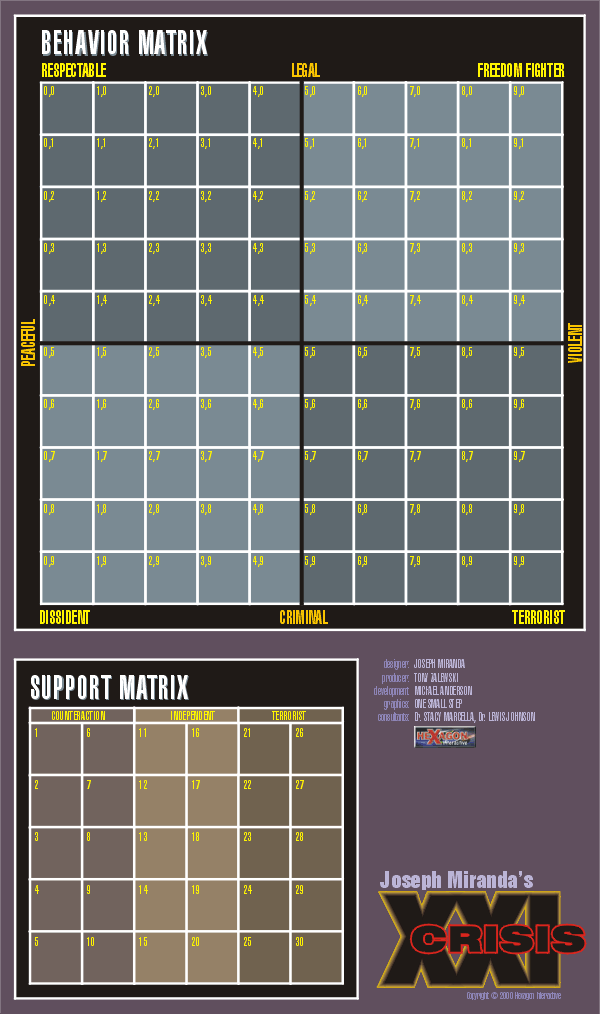


www.umahexagon.com |
|
| MATRICES
The Behavior and Support Matrices are the core of the CRISIS XXI tool system. The motivations of each faction represented in play are regulated by the Behavior Matrix. As a Front undertakes Operations in support of its agenda, the support of the people who compose that Faction tend to change, either by habit or turnover. The nature of each Operation impacts the undertaking Faction, pushing it towards extremes or pulling it towards the mainstream. The Behavior Matrix provides a multi-dimensional representation of tendencies towards violence and criminality by utilizing a Cartesian X-Y axis system, with the X Axis representing extremes of Peacefulness and Violence, and the Y Axis representing extremes of Legality and Criminality. This divides the matrix into four functional areas peaceful-legal ("Legitimate"); peaceful-criminal ("Dissident"); violent-legal ("Freedom Fighters"); and violent-criminal ("Terrorist"). Each organization in the model has a corresponding marker that shows its current "position" on this matrix. As an organization conducts operations, its relative position changes. For example, a "Freedom Fighter" type group which continually conducts assassinations will find its position shifting towards the Terrorist range. The Behavior Matrix can be expanded with additional axes, depending upon user need.
The Support Matrix is a linear tracking system that shows the relative degree of support that each organization has for opposing sides in a conflict. This may be either Pro-terrorist, Neutral, or Anti-terrorism (i.e., Pro-Counteraction). Information Warfare and cascading effects may cause an organization's support to change, thereby radically altering the political situation. There are other and more complex actions that may be generated. A major catastrophic event in the game, such as a major attack, can cause new groups to be generated and begin operations. Operations generate cascading effects on the groups who support a Faction. For example CRISIS XXI simulates how a Terrorist Faction that undertakes respectable operations will eventually enter the mainstream and lose the backing of its more extreme support groups, but may gather new support from those with less extreme points of view. However, CRISIS XXI shows how this may in turn trigger the Reconstitution routine as a group's operations conflict with member motivations. |
